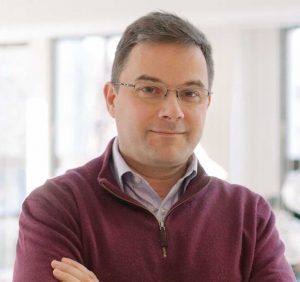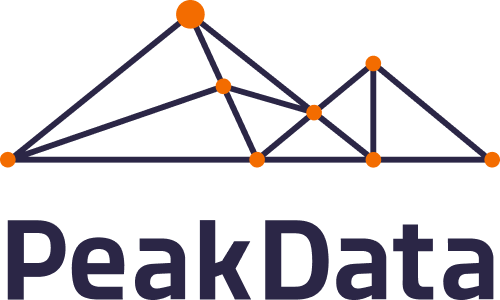Douglas Johnson-Poensgen, CEO and Co-founder of Circulor, talks to Kevin Elderfield, Partner at Erevena, about how supply chain transformation using AI and blockchain has the potential to make a game-changing impact on global greenhouse gas emissions and ethical sourcing. And why, right now, Circulor is at the heart of a powerful movement for change.
What is your company doing?
Doing business responsibly is now a mainstream issue, and we empower better business through traceability. Global supply chains are huge emitters of greenhouse gases, with a lack of transparency in terms of raw product sourcing and the ethics around it. Our mission is traceability and due diligence of raw materials, from source to manufacturer, with a particular focus (currently) on minerals used in electric vehicles and consumer electronics. To achieve this, we’re using blockchain alongside traditional databases and machine learning to establish a new global standard for ethically and sustainably sourced minerals. How? By reliably giving a commodity an identity and tracking supply chain data, including greenhouse gas emissions data, along the journey from the mine to consumption.
How and when did you get started?
I was running BT’s defence and security business and launched their cybersecurity business in around 2010. At that time, I was working with lots of cryptographers who were getting excited about something called ‘bitcoin’. Unfortunately, I didn’t buy into bitcoin, but it did get me wondering about the underlying technology of blockchain and whether it might cross over into a real-world use case. This was the first germ of an idea. Then, from 2015 to 2016 I began talking with people about the potential for blockchain combined with other technologies to be applied to different problems, like the lack of transparency and trust in supply chains.
By early 2017, my co-founder Veera Johnson and I were looking at the universe of possible use cases where there was a problem of scale not yet being effectively addressed, but with the likelihood, for them to grow in prominence. The timing had to be good in terms of need and demand, perhaps driven by consumer concern. But we recognised that the real driver of change would be industrial brands, sometimes encouraged by regulation or institutional capital, that were being asked to find different ways of doing business. Environmental, social and governance (ESG) concerns are increasingly a board room issue, with institutional investors demanding a demonstration of tangible progress, primarily around sustainability. This was our starting point.
How did you go from an idea to your focus on global industrial supply chains?
We picked a very specific use case, that of tracking cobalt in the lithium-ion battery supply chain. We recognised that this would become increasingly important in the energy transition, for example, the adoption of electric vehicles. 60% of the world’s mined cobalt comes from the Congo where there are significant concerns such as forced or child labour, the funding of armed groups, smuggling, etc. A complex industrial supply chain gave us our use case for greater transparency at every stage of the cobalt journey. We’d already heard of supply chain tracking in the food chain, for example of lettuces from farm to shelf, but that was easier because the commodity doesn’t change on its journey along the supply chain. Raw material like cobalt undergoes refining, amalgamation with other materials and is then used to make components that eventually find their way into a car. This type of industrial supply chain is an order of magnitude more complex than tracking boxes of lettuce.
This is a hugely topical subject – can you expand on that?
In January this year, the World Economic Forum published a report called Net-Zero Challenge: The supply chain opportunity. This stated, “Supply-chain decarbonization will be a ‘game-changer’ for the impact of corporate climate action.” The timing of this report was interesting in that it followed the global Covid-19 lockdowns. Research suggests that the first lockdown resulted in just a 7% reduction in global greenhouse gas emissions. Why so low? Because we were all still consuming what we already consumed, so global supply chains kept going. As the report points out: “Engaging an often-fragmented supplier landscape is challenging – especially when emissions are ‘buried’ deep in the supply chain, or when addressing them might require collective action at the industry level.” At Circulor, we see our mission as digging up the buried data on emissions.
How did you scale your business?
We had our first fields trials in Rwanda, tracking tantalum (a conflict mineral). Regulations demand that conflict minerals must be tracked from the mines through to the end manufacturer and we enabled this using blockchain technology. This was about showing how we could give manufacturers the data they needed to demonstrate responsibility along the supply chain.
At the end of 2018/early 2019, we started a pilot project for Volvo Cars tracking cobalt in their battery supply chain. This led to our first long-term contract with Volvo and today we have several other car manufacturers and consumer electronics companies as customers. So, our journey has taken us from a germ of an idea about how and where new technology might be applied, to today where we are the market leader in this field.
How are you developing the concept?
We are working with Volvo and Polestar on the development of a living battery passport that gives almost real-time information on all the raw materials in a battery to help them understand the full scope of the emissions from each battery, the data about the battery in life and then when it is removed from the vehicle, its second life of recycling journey. The aim is to help them buy smarter, which is hugely important considering the significant contribution batteries makes to supply chain carbon contribution. –around 70% of the embedded carbon in a new electric vehicle is due to the supply chain, with only 30% being the auto manufacturer themselves. Achieving net-zero in the automotive industry means getting to grips with the supply chains’ contributions to this embedded carbon. Regulators have caught onto this as well, with new regulations governing responsible manufacturing, lifetime use and recycling recently published by the EU.
It is an uncomfortable truth that if you buy an electric vehicle, you have to drive it for approximately 50,000 miles to have the same carbon footprint as a similar petrol car, largely due to the carbon impact of the supply chain. So, with car manufacturers striving towards net-zero targets, it is no surprise that they are working with us to plot a low carbon route through their supply chains. They are gaining insights into how to use purchasing as a driver of sustainability.
Looking beyond batteries we are now actively working on other heavily polluting materials as well as methane gas emissions and circular economy business models, all of which require knowledge of where things are in a supply chain.
Can you explain how technology builds trust in the supply chain?
If you want to create a reliable record of everything that happens in your supply chain, you must be able to capture data at every stage. But how do you generate trust in that data? Blockchain helps because it enables you to upload data in real-time as an immutable record, so history cannot be re-written. This builds trust downstream. . Apart from aggregating and testing the integrity of self-reported data we derive intelligence from other sources, like the analysis of aerial imagery, to test claims. We also attach attributes to the flow of materials, including attributing a slice of inherited carbon emissions at each step of the supply chain.
This all links back to the heightened demand for a strong (and demonstrable) stance on Environmental, Social, and Governance (ESG) , and we are seeing a growing hunger amongst investors for reliable and verifiable data on ESG performance. As an example, Blackstone, the leading global investment firm, publicly states that it integrates environmental considerations into every step of its investment process. The firm uses its votes at annual general meetings to vote against boards that are not doing enough in this area – this approach to investment is forcing change.
How does Circulor attract the talent and investment it needs to keep growing?
When you have a mission like ours, it is easier to attract talent. The question is how to find a truly great world-class talent for leadership roles to support our ambitions to scale. We can’t do this alone, so are currently work with Erevena to find the right senior people to help us on our rapid growth journey. For example, we are actively looking to expand into the US in time for what we believe will be a sudden scramble for supply chain transparency and traceability as the new administration pushes ahead with a new sustainability agenda. We will want people who can lead this charge credibly and with eloquence, and Erevena can help us with this.
Our timing for this is good. The fact that we are doing something worthwhile that is currently very topical, and we are well-positioned to ride the wave helps candidates believe that Circulor could be a good place for them to make a meaningful contribution to society. This is important when you seek people willing to take the risk of working in a growth-stage business.
What about attracting investment yourself?
We wanted to be profitable before taking on any external capital and last June we demonstrated that we could be both sustainable and profitable. Only then did we go into our first funding round, in which many of our customers became investors. These companies had been working with us for several years and their confidence sends out signals to other venture capital investors. Once you start attracting VC money, more investors want to come on board and be part of the journey to making a profit.
What next for Circulor?
My personal objective is to make a difference at scale to some of our most pressing problems. I am determined to materially reduce the carbon footprint of global supply chains and know that we can do this – but only if we can engage at scale. As more major brand names place their trust in us, the impact we help generate will grow and grow – that’s exciting.
Share this article:













